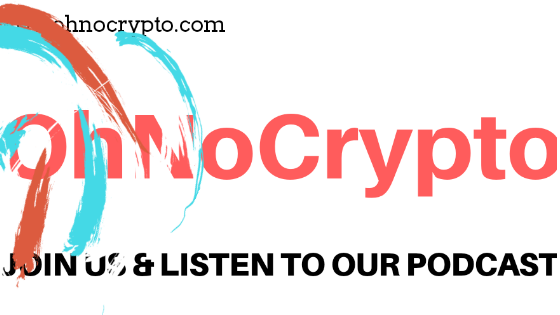The Bitcoin halving is just days away, but after a tumultuous first quarter, Bitcoin miners face an uncertain future

Bitcoin mining requires computing power, which incurs a cost. To make recuperate this cose, the miner that verifies each block is rewarded for their work with newly-created bitcoins. This ‘block reward’ is how new bitcoins are released into the system.
The current block reward is 12.5 bitcoins per block. A new block of transactions is added to the Bitcoin blockchain approximately every ten minutes. An average of 144 blocks are mined every day which means approximately 1,800 new bitcoins are produced every 24 hours.
Bitcoin has a pre-programmed supply limit of 21 million bitcoins. To reduce the rate that new bitcoins are produced as the circulating supply approaches this limit, the bitcoin protocol reduces the number of new bitcoins included in each block by half.
Brave New Coin has a page dedicated to estimating the date and time of the next Bitcoin Block Reward Halving. We have created four scenarios based on different block time metrics. Each scenario is a moving estimate and the timestamp, charts, and values shown on this page are re-calculated daily.
This 50% reduction in the supply of bitcoins is hardcoded into the bitcoin protocol and happens automatically every 210,000 blocks (approximately every four years). This is known as the Bitcoin Halving. The next halving will be the third, and the current block reward of 12.5 bitcoins will reduce to 6.25 bitcoins per block.
Mining profitably is dependent on a number of costs, related to hardware, location, and most importantly the cost of electricity. Individual miners need bitcoin to be at a certain price in order for the bitcoin revenue they earn to be greater than their power costs.
Miners with lower power costs and more efficient mining rigs have a competitive advantage as they are able to generate higher returns.
When Bitcoin was trading at $10,000, as it was in February, miners were able to achieve healthy margins, however, as the price drops, only the newer generation, more efficient mining machines stay profitable.
While the Bitmain S17 has been the industry standard, the company is now preparing to release its Antminer S19 (95TH/s) and Antminer S19 Pro (110TH/s). These models generate significantly more power than the S17's 70TH/s. Bitmain's website lists them as available for retail delivery in July.
A recent report by Blockware Solutions analyzed the changing dynamics in the bitcoin mining industry as new generation mining machines come online. The report states that "Bitmain’s S17 Pro 50T consumes 50% more energy but produces 300% more hash power than the Bitmain S9 13.5T. Each S17 Pro 50T deployed is the equivalent hash power of four S9 13.5T mining rigs."
“The innovation in the chips makes electricity less relevant as less watts are consumed per terahash,” states Blockware Solutions. “Next generation mining rigs reduce the financial impact of higher electricity rates. Conversely, low electricity rates reduce the impact of the comparative disadvantage from inefficient, old rigs."
However, sustained downwards price pressure forces miners to turn off unprofitable mining rigs. This, in turn, leads to a drop in Bitcoin’s hash rate, and eventually, Bitcoin’s difficulty adjusts again to compensate.
As new machines such as Bitmain's S19 Pro come online they will begin to dominate the network’s hash rate and older generation miners will no longer be profitable, even on cheaper electricity.
Bitmain dominates the competitive Bitcoin mining industry, and was the largest and most profitable player in the space during 2017 and 2018. The world's largest producer of ASIC miners also operates BTC.com and Antpool, two of the biggest Bitcoin mining pools.
Together the two pools control almost 30% of the hash rate on the Bitcoin network. The 2017 crypto bull market saw the company make an annual profit of between $3 and $4 billion.
As crypto asset prices surged, Bitmain was able to charge higher and higher premiums on mining equipment while also selling off crypto assets at higher prices than they mined them at. The company was able to continue this strong performance in the first half of 2018, making a reported $742.7 million profit.
In an attempt to consolidate its strong position and raise additional capital for hardware production, Bitmain began preparations for an Initial Public Offering (IPO) on the Hong Kong Stock Exchange in Q2 2018. The company completed its pre-IPO registration with the Hong Kong Stock Exchange in August and filed in September.
A year later, however, Bitmain had fallen on hard times. The IPO failed to proceed and multiple reports suggested the company was in debt and running out of money. Financial data provided to the Hong Kong Stock Exchange ,as required for an IPO application, revealed that Bitmain made a net loss of $500 million in Q3 2018.
2019 was a mixed year for Bitmain, characterized by an internal struggle between co-founders Jihan Wu and Micree Zhan, and a slow loss of mining market share. It appears that the mining giant might be achieving a reversal of fortunes in 2020.
A Chinese language mining industry blog reports that Bitmain made an internal announcement that it had earned over $300 million in 2020. The blog says Bitmain was also able to increase its market share by opening new mining facilities, and it saw the hashrate increase in two of its mining pools.
Meanwhile, long time Bitmain critic, Blockstream CSO Samson Mow tweeted that Bitmain customers have reported that Antminer S17/T17s have a failure rate of 20-30% compared to a normal failure rate of 5%.
Those reports have not deterred Riot Blockchain, a mining company listed on the Nasdaq, from purchasing 1,000 of Bitmain's next-generation S19 Pro Antminers for $2.4 million. Riot said that it anticipates receiving the S19s by early July, as will other professional mining companies, before Bitmain’s rollout to individual or retail miners.
OhNoCrypto
via https://www.ohnocrypto.com
Andy Pickering, Khareem Sudlow

